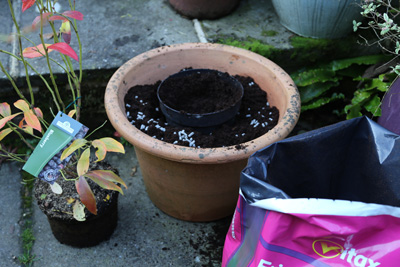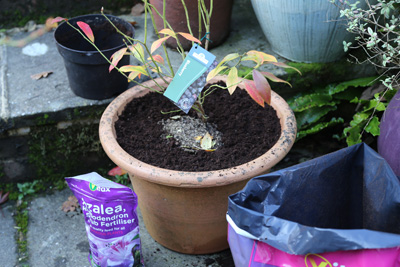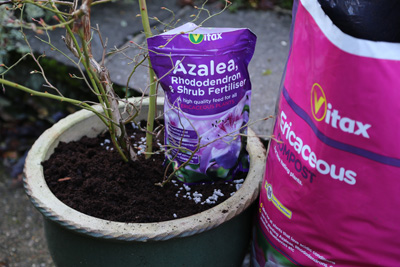Growing blueberries in pots
 Imagine picking superfood blueberries fresh from your garden? These delicious vitamin-packed fruits are so easy to grow. They do need acid soil, but that’s not a problem if you grow them in pots and use the right compost and fertiliser. What is more, they are ideal for small gardens and will even thrive in quite shady conditions. You will even pick some fruit in the first year - enough to enjoy fresh from the plant, transform your breakfast cereal or liven up a desert.
Imagine picking superfood blueberries fresh from your garden? These delicious vitamin-packed fruits are so easy to grow. They do need acid soil, but that’s not a problem if you grow them in pots and use the right compost and fertiliser. What is more, they are ideal for small gardens and will even thrive in quite shady conditions. You will even pick some fruit in the first year - enough to enjoy fresh from the plant, transform your breakfast cereal or liven up a desert.
How many plants do you need to get fruit?
Some blueberry varieties are self-fertile, in other words a single plant will set fruit and produce a crop of berries. Examples are: ‘Bluecrop’ and ‘Sunshine Blue’. Most need a second plant to cross pollinate with, in other words a compatible variety growing in another pot. Then both plants will produce fruit. Check when you buy your plant or plants.
Container-grown plants can be planted all-year-round, but autumn, winter and early spring are the best times to plant, also when you are likely to find the plants on sale.
Choosing a container
 Blueberry plants are attractive shrubs. They are deciduous so lose their leaves in winter, however the foliage colours richly in autumn. The white flowers are like those of pieris, and of course the fruits are very appealing.
Blueberry plants are attractive shrubs. They are deciduous so lose their leaves in winter, however the foliage colours richly in autumn. The white flowers are like those of pieris, and of course the fruits are very appealing.
Like all ericaceous plants they have a dense, fibrous root system and they need plenty of moisture. Therefore it is important to choose a pot that is large enough and will not dry out too quickly. A deep pot that is around 45cm in diameter is ideal.
Use the right compost
You need a lime-free growing medium for blueberries. If you use ordinary multi-purpose compost or a standard potting compost the foliage will turn yellow, growth will be slow and stunted and the plants are unlikely to flower and fruit.
Ericaceous compost provides the perfect growing conditions. It retains the right amount of moisture and contains the correct balance of nutrients to ensure healthy growth, prolific flowers and that means plenty of fruit.
The easy way to plant
 Water your new plant thoroughly before you start. Then partially fit the container you have chosen with Ericaceous Compost.
Water your new plant thoroughly before you start. Then partially fit the container you have chosen with Ericaceous Compost.
Now carefully remove the blueberry from its growing pot and set it aside. Place the growing pot inside the patio pot and fill around it with the compost, firming lightly with your fingertips. When the compost is two thirds of the way up the pot add a handful of Vitax Azalea, Rhododendron and Shrub Fertiliser; this is specially formulated for Ericaceous plants.
Continue to fill up to the top of the pot and firm lightly. Then slip the growing pot out of the compost and drop in the blueberry plant. It will fit perfectly and be planted at just the right level.
Aftercare
Regular watering is essential. Blueberries hate to be dry at the roots. They are light feeders, so an annual application of Vitax Azalea, Rhododendron and Shrub Fertiliser will supply most of the nutrients they need.
Each spring, scrape off the surface of the compost, add a handful of fertilizer and top up with fresh ericaceous compost. Apply another small handful of fertilizer in mid-summer: blueberries have a second phase of growth later in the year and additional feeding gives the plants a late boost.
After a couple of years your blueberries will need pruning. Do this in midwinter, shortening back any long canes that have grown up through the centres of the plants. This encourages branching which results in more fruit.
Andy McIndoe
Your login details have been used by another user or machine. Login details can only be used once at any one time so you have therefore automatically been logged out. Please contact your sites administrator if you believe this other user or machine has unauthorised access.












